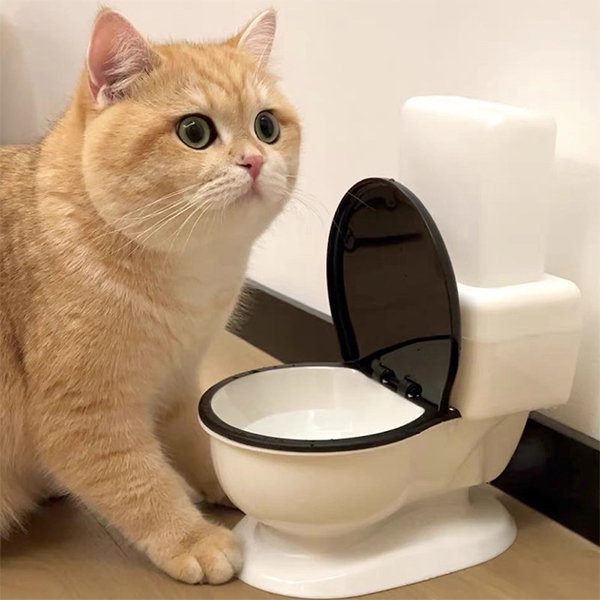Everyone is bound to have his or her own assumption involving How to Dispose of Cat Poop and Litter Without Plastic Bags.

Intro
As feline proprietors, it's important to be mindful of just how we deal with our feline close friends' waste. While it may appear hassle-free to flush pet cat poop down the toilet, this technique can have harmful effects for both the environment and human wellness.
Environmental Impact
Flushing pet cat poop introduces harmful microorganisms and bloodsuckers into the water system, posing a considerable risk to water ecological communities. These contaminants can adversely influence marine life and concession water quality.
Health and wellness Risks
Along with environmental issues, purging pet cat waste can also position health and wellness threats to humans. Feline feces might contain Toxoplasma gondii, a parasite that can trigger toxoplasmosis-- a possibly extreme illness, particularly for expecting females and people with damaged immune systems.
Alternatives to Flushing
Luckily, there are more secure and more responsible ways to get rid of feline poop. Take into consideration the adhering to alternatives:
1. Scoop and Dispose in Trash
The most common method of taking care of cat poop is to scoop it right into a biodegradable bag and toss it in the garbage. Be sure to use a dedicated litter inside story and take care of the waste without delay.
2. Usage Biodegradable Litter
Select eco-friendly feline clutter made from materials such as corn or wheat. These litters are eco-friendly and can be securely dealt with in the garbage.
3. Bury in the Yard
If you have a backyard, take into consideration hiding pet cat waste in a marked location far from veggie gardens and water sources. Make certain to dig deep adequate to stop contamination of groundwater.
4. Mount a Pet Waste Disposal System
Buy a family pet garbage disposal system particularly developed for cat waste. These systems use enzymes to break down the waste, reducing smell and ecological impact.
Final thought
Responsible pet possession expands past offering food and shelter-- it additionally entails appropriate waste administration. By avoiding flushing cat poop down the commode and selecting alternate disposal methods, we can decrease our ecological footprint and protect human wellness.
CAN I FLUSH MY CAT'S POOP DOWN THE TOILET?
Always avoid flushing cat poop down the drain because not only could it potentially contain harmful parasites called toxoplasmosis, the litter could sit in your line and lead to a clog.
Plenty of waste gets flushed down your toilet every day, so what harm could a little cat poop and cat litter do? The answer is a lot, which is why you never want to send it down your drains.
Can I Flush My Cat's Poop Down The Toilet?One of the biggest problems with flushing your cat’s presents is the harmful parasites in your feline’s stool called toxoplasmosis. Extremely dangerous for humans, especially pregnant women and people who are immunocompromised, these parasites can cause a multitude of problems for unborn babies and even cause death or miscarriage if the infection happens early. That’s why you should always avoid touching cat poop. Also, water systems are not equipped to handle toxoplasmosis and are unable to destroy the parasite before it’s sent back into the environment, potentially jeopardizing the health of local area wildlife, specifically marine life.
Flushing cat poop could also lead to a future drain clog. Try as you may to eliminate any litter from it, there will always still be some stuck on there – and even if it says flushable on the label, it’s not! Cat litter is made up of bentonite clay, which has the tendency to harden when wet, creating a thick, almost cement-like quality. Cat litter that ends up down the drain can expand from the moisture in the pipes and then harden, blocking any wastewater. If you have a septic tank or a cesspool, it cannot handle cat litter either, no matter what kind. If it solidifies in the tank, in any of the system’s major parts like the inlet baffle, it’ll create some expensive problems.
The best way to dispose of cat poop safely is to scoop it into a bag and throw it into the trash – and ways of dealing with the smell include adding baking soda and replacing the box more.
Now that we’ve explained the potential harm that flushing cat poop can cause to you and your drains, you might be wondering the best way of dealing with it. Unfortunately, it’s the old-fashioned way of scooping it into a bag and then placing it into a trash can. They also make pet-proof trash cans that lock in the smell, so that you don’t have to always immediately take it out. If you’re tired of smelling the litter box after even just one use from your feline, there’s things you can do to help combat that smell. Adding baking soda to the litter will reduce smells, but just don’t add too much or your cat will no longer want to use the box. You could also replace the box more frequently, at least once a year, as those smells can just seep inside the scratch marks. Lastly, try changing to a new litter formula – some are better with smells than others.

I hope you enjoyed our part on Don’t flush cat feces down the toilet. Thanks for spending some time to read our blog post. Are you aware of another individual who is interested by the topic? Be sure share it. Thanks so much for taking the time to read it.
Schedule A Service Call